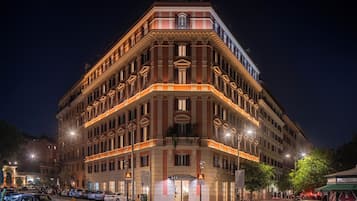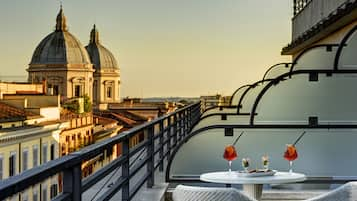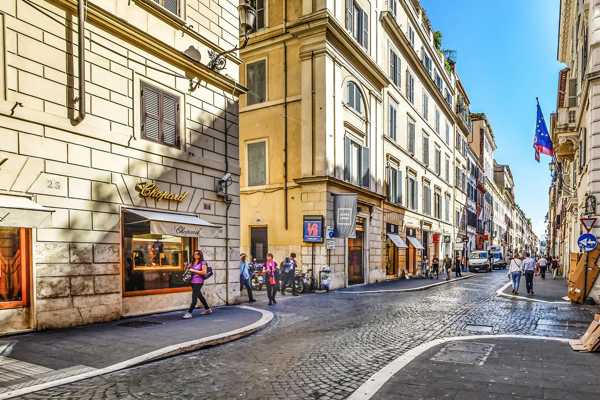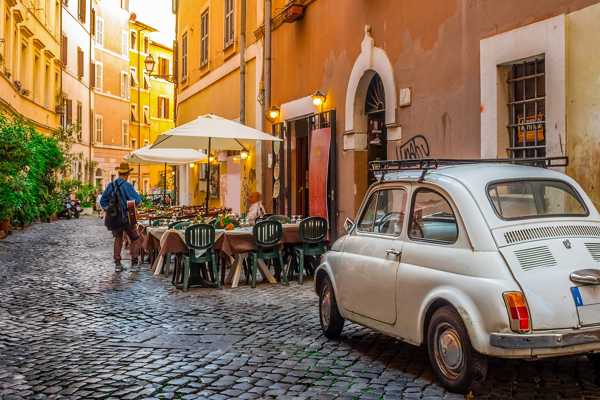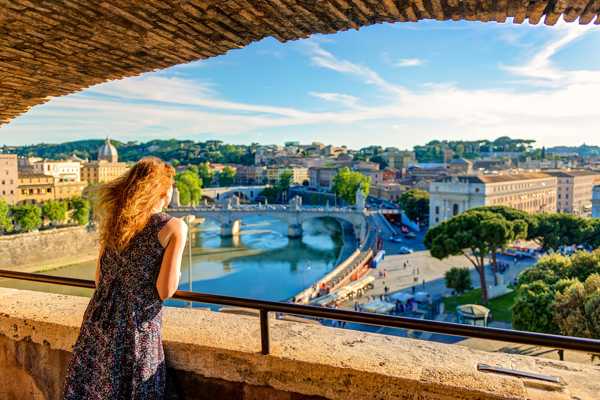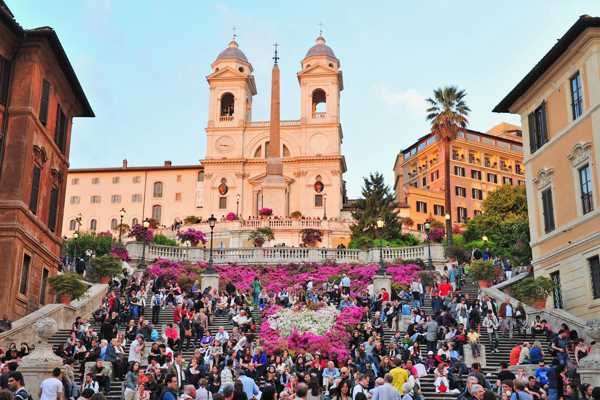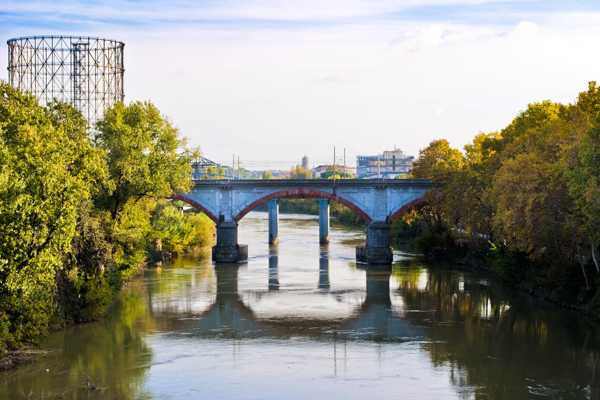The Trevi Fountain in Rome offers a look at a massive historic fountain built by famed architects and artisans that's among the largest and most famed fountains in the world. The fountain stands over 26 meters high and more than 49 meters wide and is the largest fountain in the city, dating from the Baroque era. Thousands of people travel to the Trevi district every year to view and photograph this fountain, which has been shown in several Hollywood movies.
The fountain presents not only a fine example of classic Baroque architecture and sculpture but has a unique history as well. It marks an important landmark in the ancient city of Rome and receives semi-regular major preservation and restoration projects to preserve its artistic and structural integrity. Today it offers an ideal photo opportunity at an iconic location in the heart of one of the greatest cities in the world.
Trevi Fountain in Rome - one of the highlights of 10 Iconic Buildings and Places in Rome and 10 Best Free Things to Do in Rome (Read all about Rome here)
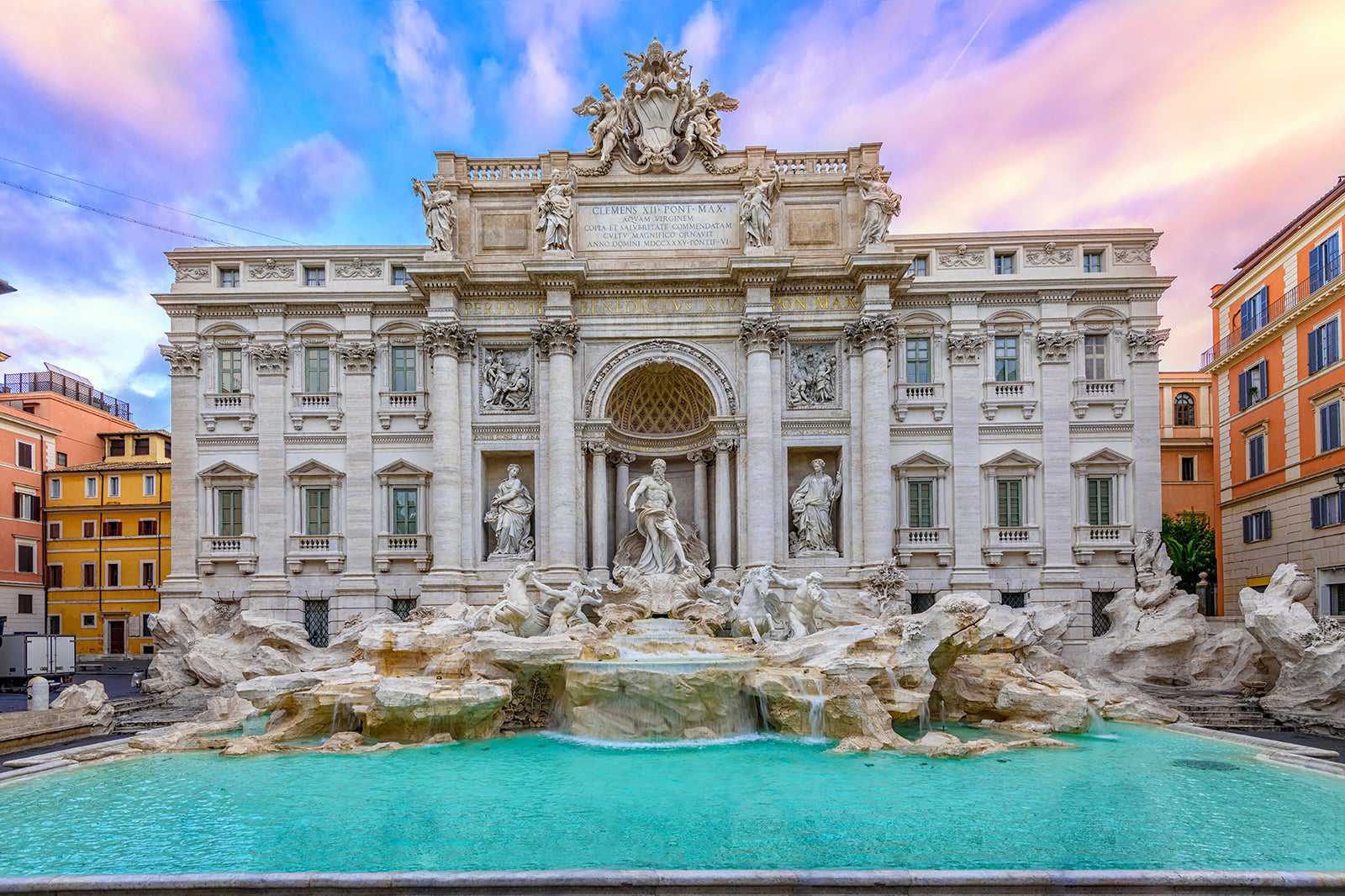
History of the Trevi Fountain in Rome
The Trevi Fountain sits at what was the terminal point of one of the important aqueducts in ancient Rome, replacing a smaller original fountain at the site. Legend has it that assisted by a virgin oracle in 19 BCE, technicians found a pure water source 13 kilometers from the city and planned an aqueduct that served the city for over 400 years. By the 6th century CE, most Roman aqueducts had fallen into disrepair and were damaged during Ostrogoth invasions, but this one continues to work to this very day and feeds the fountain.
In 1629, Pope Urban VIII commissioned the first sketches to make the fountain at the site more grandiose. Still, it wasn't until 1730 that Pope Clement XII chose Nicola Salvi to design the new fountain, which was decorated by Filippo della Valle, Pietro Bracci, Andrea Begondi and Giovanni Grossi. It was completed in 1762 and is made of Travertine quarried about 35 kilometers from the site.
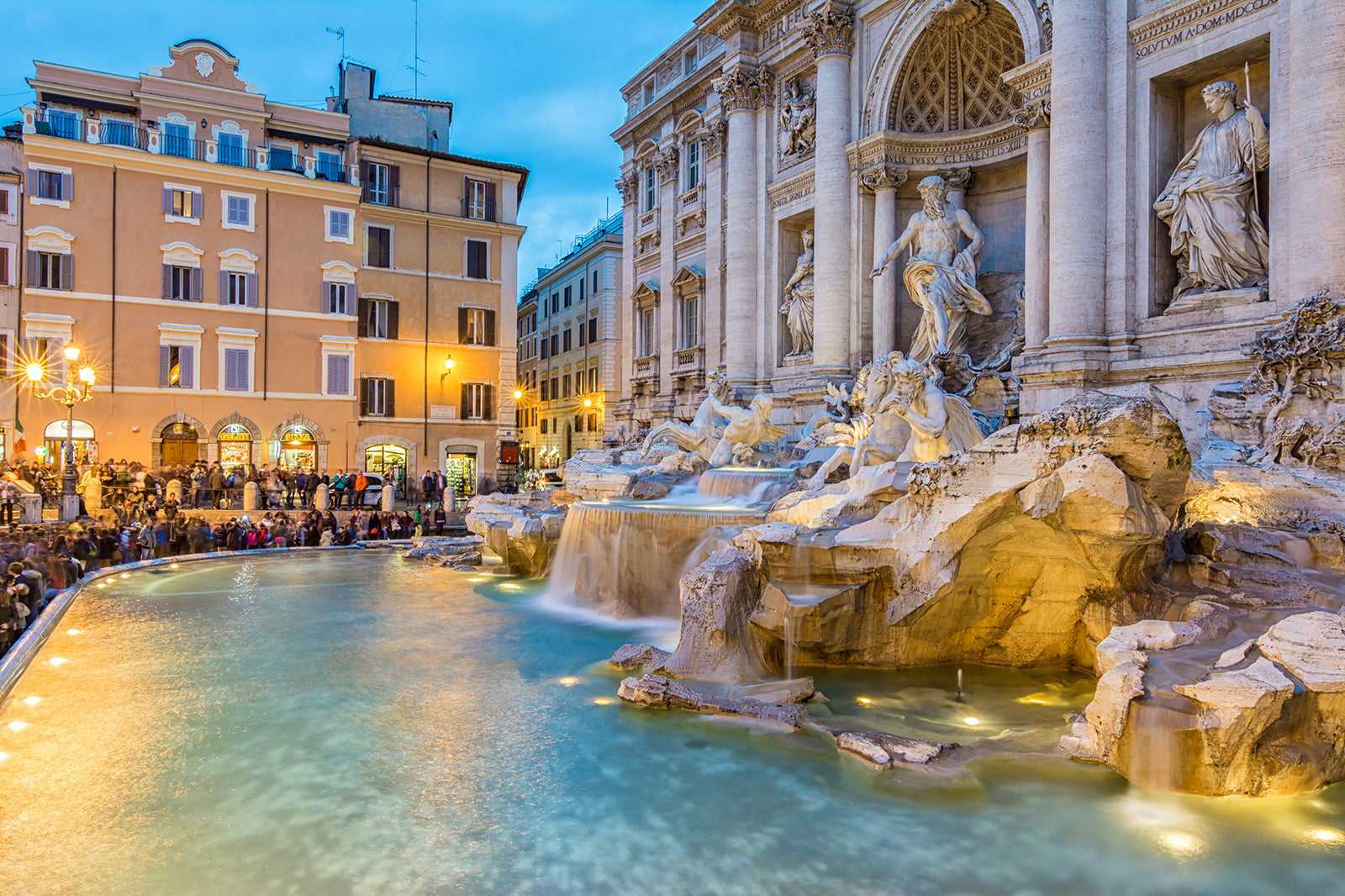
Highlights of the Trevi Fountain
The Palazzo Poli functions as the backdrop for the fountain and is iconic for its gigantic Corinthian pilasters. The sculpture is themed 'taming of the waters'. It appears to tumble forward to fill the small square, blending stonework and water together as the deity Oceanus rides a shell chariot guided by Tritons as he seeks to tame a herd of hippocamps. The triumphal arch at the center is superimposed across the palazzo façade, while the central niche uses free-standing columns to control the shade and light. Flanking the god, a figure of Abundance spills water on one side while Salubrity allows a snake to drink from a cup. Bas-reliefs above display the aqueducts' Roman origins.
Travelers who visit here are encouraged and expected to throw coins into the fountain. It's estimated that 1.4 million Euro have been thrown into the spray over the years, money which has been used to subsidise a discount grocery store for financially disadvantaged in Rome.
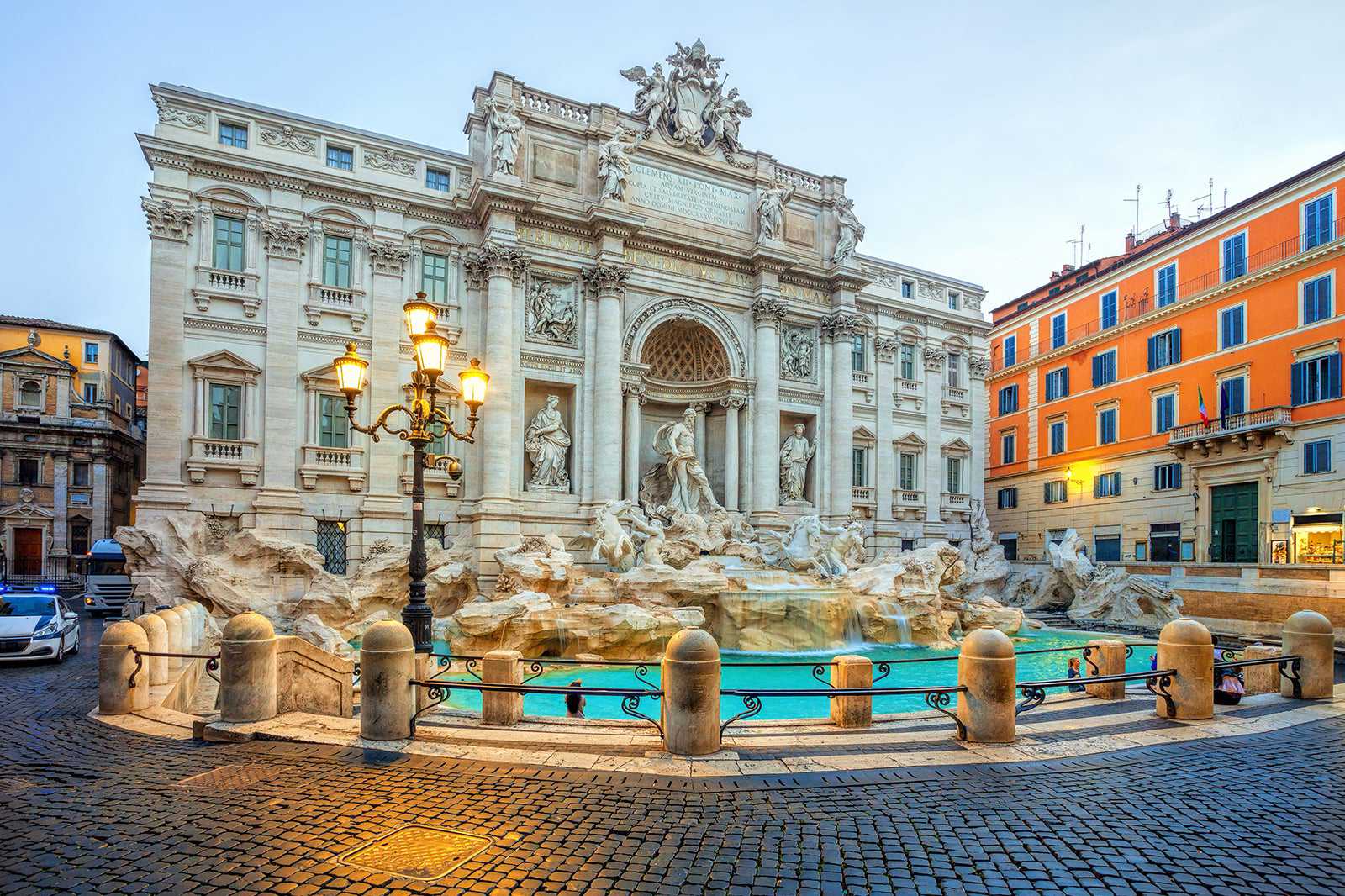
Good to know about the Trevi Fountain
If you choose to throw coins into the Trevi Fountain, tradition holds that you're supposed to do so over your left shoulder with your right hand while standing with your back to the fountain. As tempting as it can be to reach in and grab a few coins, this is illegal to do and is considered theft. You can be arrested for doing this, so just enjoy the glitter of the coins and don't reach for any.
The fountain is open to the public as it is part of a public square. Since it's outdoors, pets can be brought along, but dogs should be kept on a leash. It's also disability friendly as it's part of a level outdoor street, so wheelchair users will have few issues visiting. Finally, it's a family-friendly place to visit and quite safe, though it can get crowded with visitors at times.
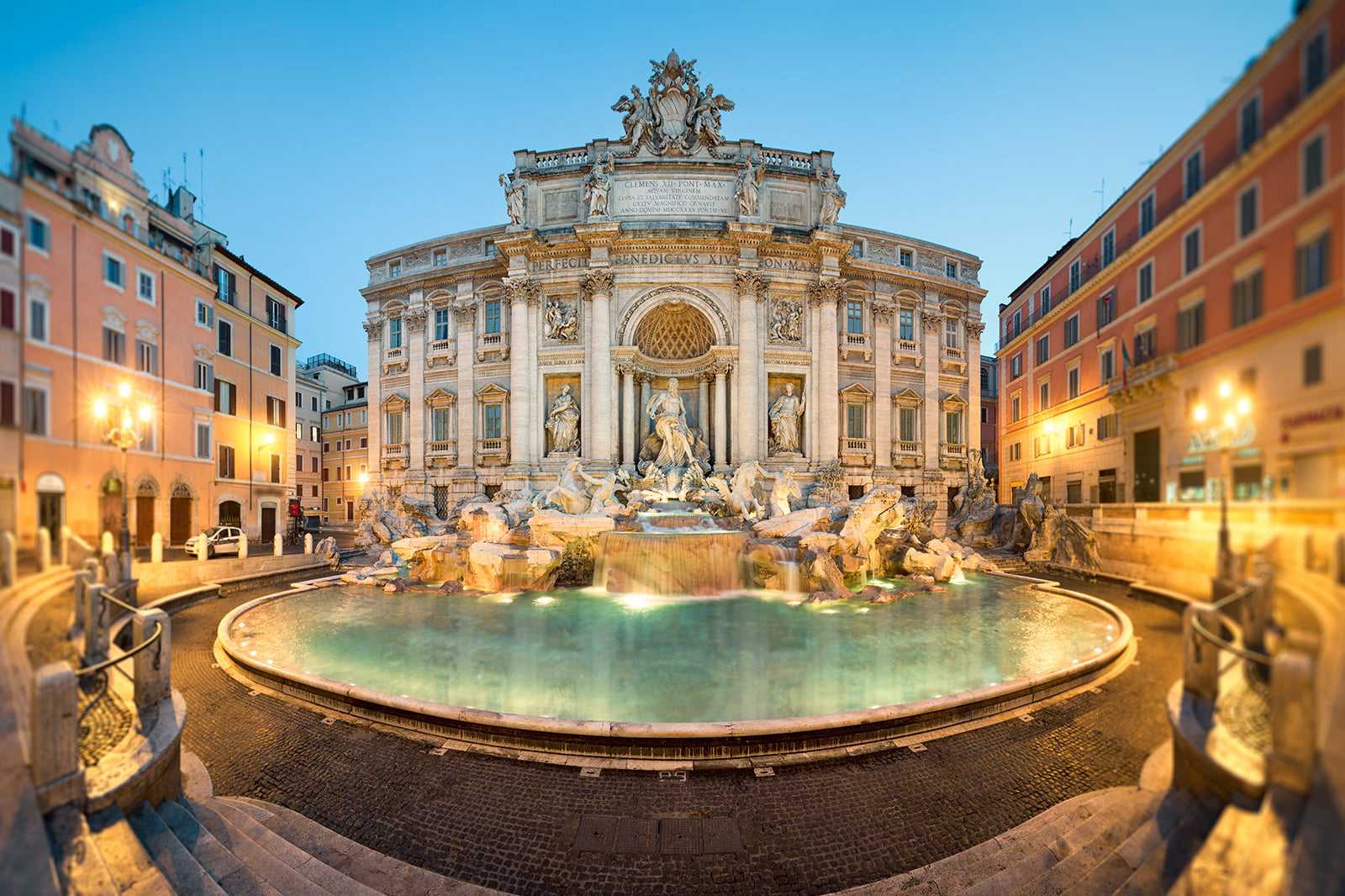
Trevi Fountain in Rome
Location: Piazza di Trevi, 00187 Roma RM, Italy
Open: 24/7




